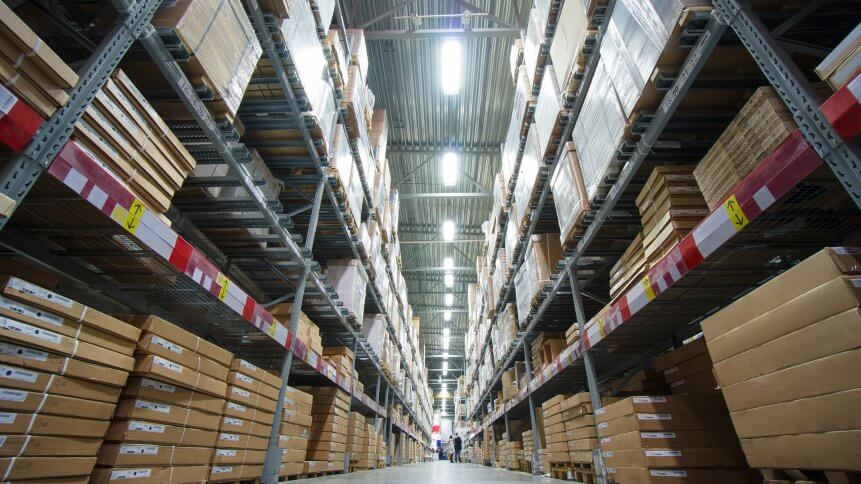How inventory visibility changes the game for retailers

Thanks to demand forecasting, ideal stock levels, order management and tentative but increasing use of AI (artificial intelligence) in inventory planning, the problems of having too much, or not enough, inventory in a store are easing.
Nothing’s perfect though. When we factor in unpredictable weather patterns and experimental price promotions, it’s virtually impossible to achieve perfect inventory availability in stores.
The stakes are high here. A recent IBM study found that if an item is out-of-stock in a store and the store is not able to locate the item in stock at a different store, 72 percent of consumers will switch to a competitor.
Keep the dream alive
The good news is that shoppers certainly don’t want to give up too easily. They expect their chosen retailers to offer alternative ways for them to receive desired items, tapping into the additional services that omnichannel makes possible.
Retaining today’s digitally-savvy consumers means earning their trust at every step of that relationship: offering compelling products, helpful item information, attractive prices, loyalty rewards, omnichannel experiences— and being in-stock on that SKU in whatever channel the customer happens to choose.
Products should be delivered or available for pick-up or delivery wherever the customer prefers.
Visibility of inventory is key
Inventory visibility is vital to building this strong retailer-customer relationship, and it enables retailers to convert stock-out disasters into precious opportunities.
PwC’s Total Retail research found that 68 percent of consumers want the ability to check other stores or online stock quickly. Unfortunately, just 58 percent say they are satisfied with retailers’ current ability to do so.
“Customers are frustrated that stores cannot be more transparent about their inventory,” the report states. “The truth is that most retailers’ systems are not robust enough to reflect minute-by-minute inventory much less communicates it accurately, in real-time, to shoppers.”
Under this kind of pressure, the most nimble retailers are integrating in-store inventory status with online in real-time, using cloud capabilities for speed and accuracy of data management, observes Alan Holcroft, Director at Cegid.
They’re mastering the fundamentals of having a single, accurate view of inventory available across the enterprise, from the warehouse to stockroom to merchandise displays.
YOU MIGHT LIKE

Everybody isn’t talking about blockchain in retail
Capability to save the sale
The list of fulfillment services in demand is growing. It now includes eReservation, web-to-store (BOPIS), ship from store, store-to-store, and store-to-web (endless aisle).
By providing the ability to conveniently source a wanted item from a different location, retailers save sales otherwise lost to out-of-stocks. Real-time, accurate inventory visibility also enables stock rebalancing, helping retailers avoid costly markdowns and stock-outs, as well as preserving profitability — all while satisfying more customers and increasing their customer lifetime value.
According to a Zebra study on Inventory Accuracy in the Omnichannel Landscape, a single view of inventory can cut out-of-stocks by up to 50 percent.
It’s been found that if inventory can be purchased on any channel, it decreases the likelihood of discounting stock that doesn’t sell in a specific channel. It follows that opportunities to sell at full-price are better for the brand.
So, retailers need to do everything well. Those that can make significant improvements in inventory accuracy stand to gain a considerable competitive advantage over those who can only locate 70 percent of their goods, for example.
With distributed order management (DOM) software in place, retailers can develop sales and profitability around the availability of stock across all locations– keeping shoppers onboard because they can shop exactly how they want to.
Robust software for DOM is essential at a time when we’re starting to witness full-scale roll-outs of omnichannel services, where individual stores are becoming logistics centers, in tandem with the traditional distribution hub.
Seal the deal with inventory tracking
Store stockrooms can be a black hole when it comes to inventory visibility– not ideal for store colleagues hoping to find an item for a loyal customer.
The reality is that warehouse shipment data and overall store inventory level data is inadequate when the store is acting as a mini-warehouse, for Click and Collect and other services.
We’re now seeing the arrival of mobile devices into stores that facilitate better cycle counts of physical inventory, leading to greater stock accuracy. Retailers can leverage modern mobile hardware and software solutions to carry out inventory tracking, accepting or initiating product transfers and Click and Collect picking, regardless of where these tasks take place in the store.
By capturing every movement with a scan, retailers can be confident they’re accessing precise detail on the location of every item, as well as ensuring the accuracy of every order fulfilled.
Out-of-stocks can’t be eliminated completely, but they can be managed in ways that protect sales and even boost brand reputation. The savviest retailers are simply seeing more and serving better.








